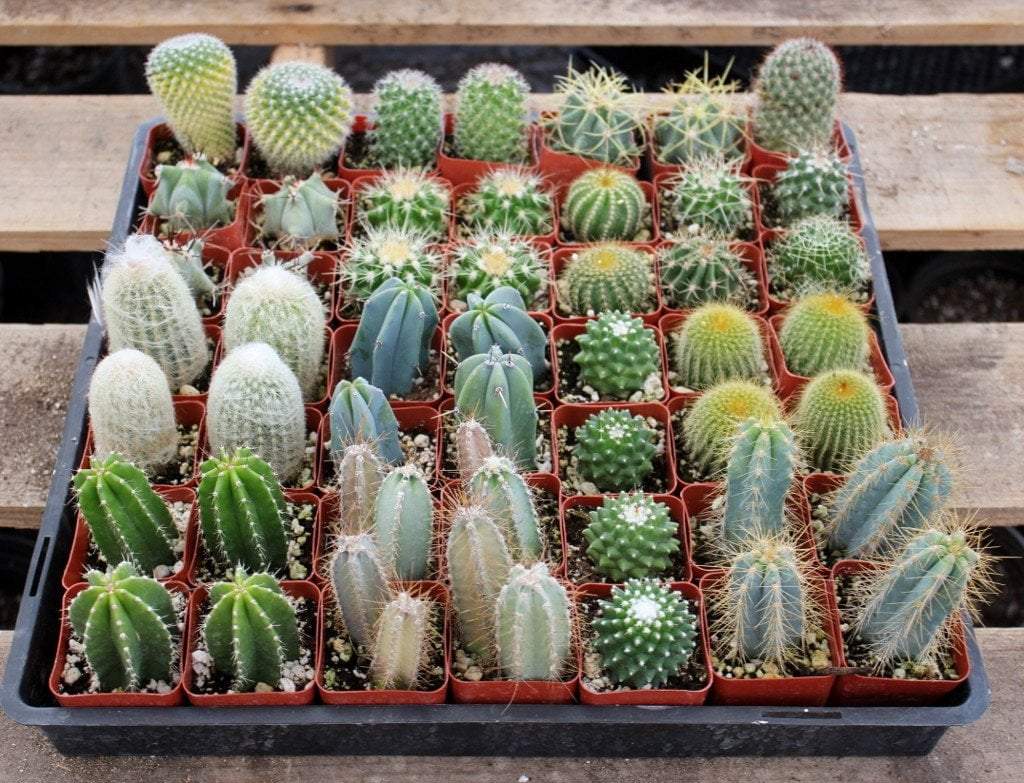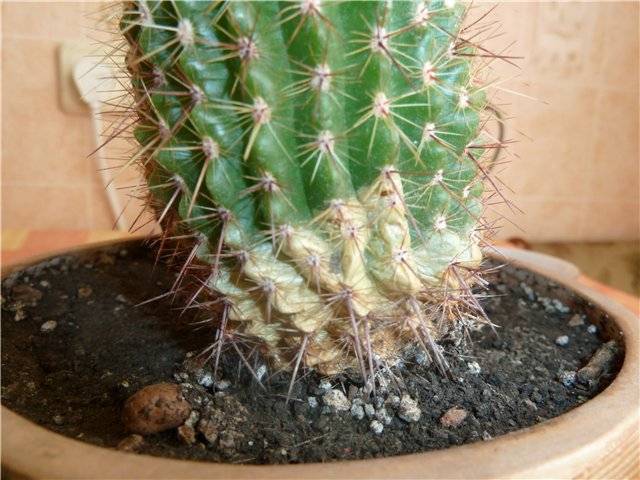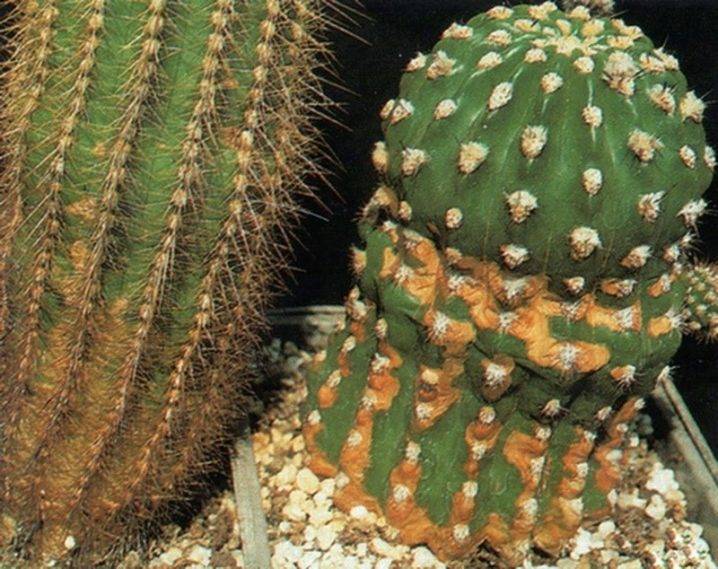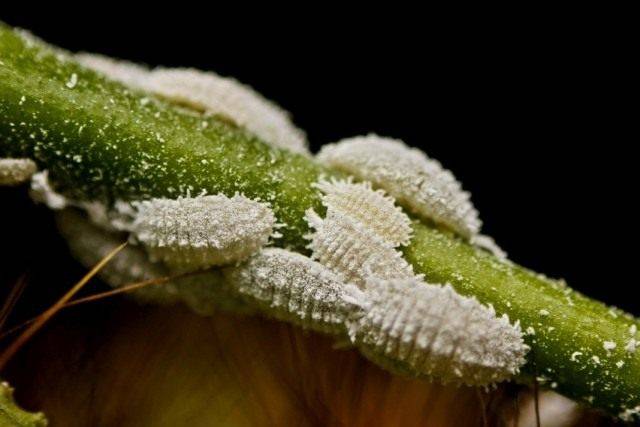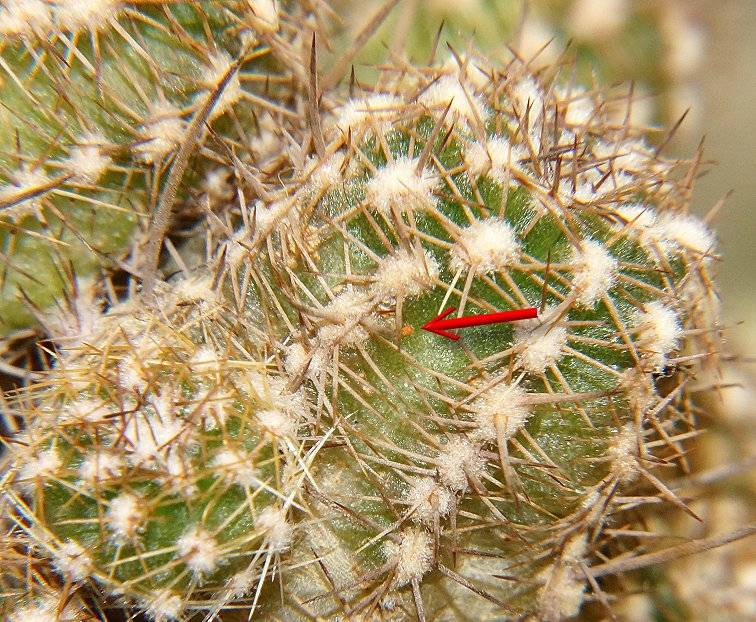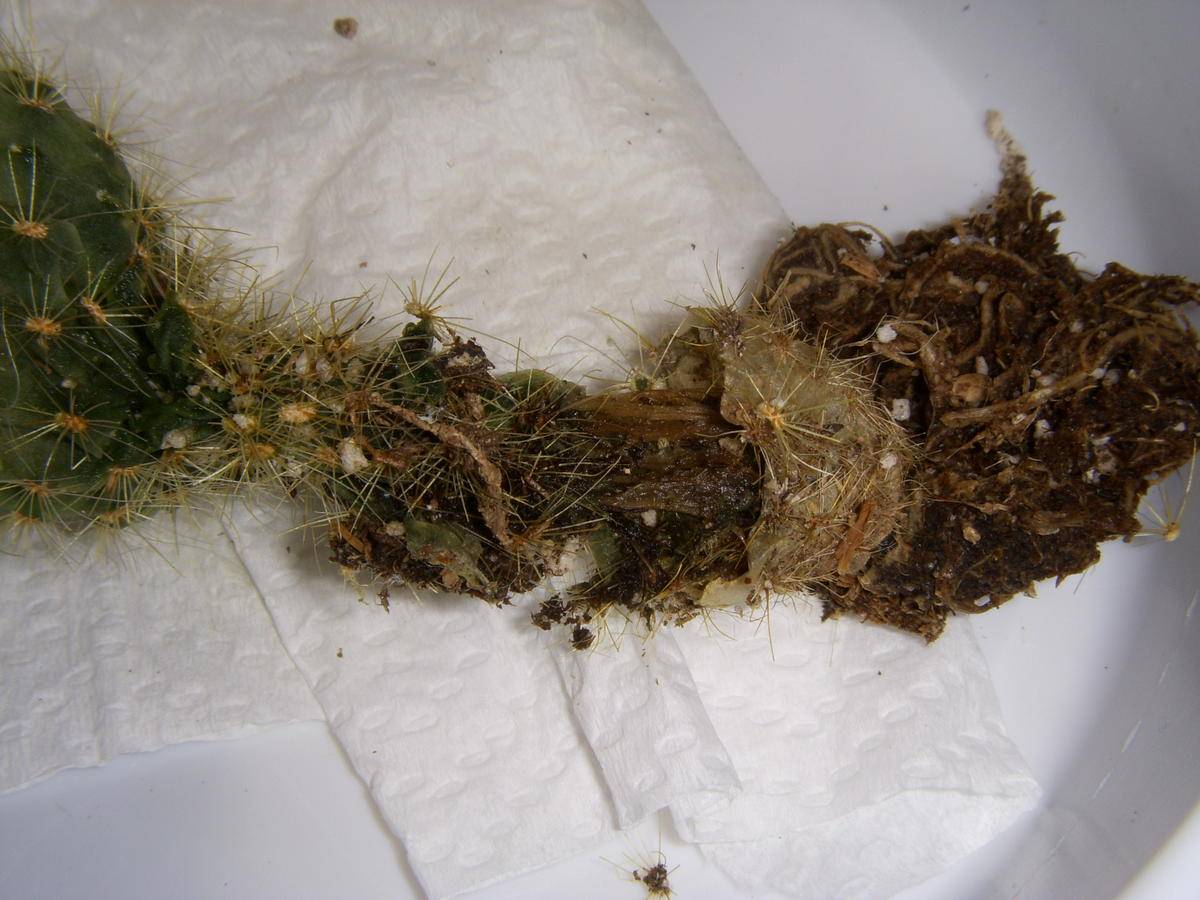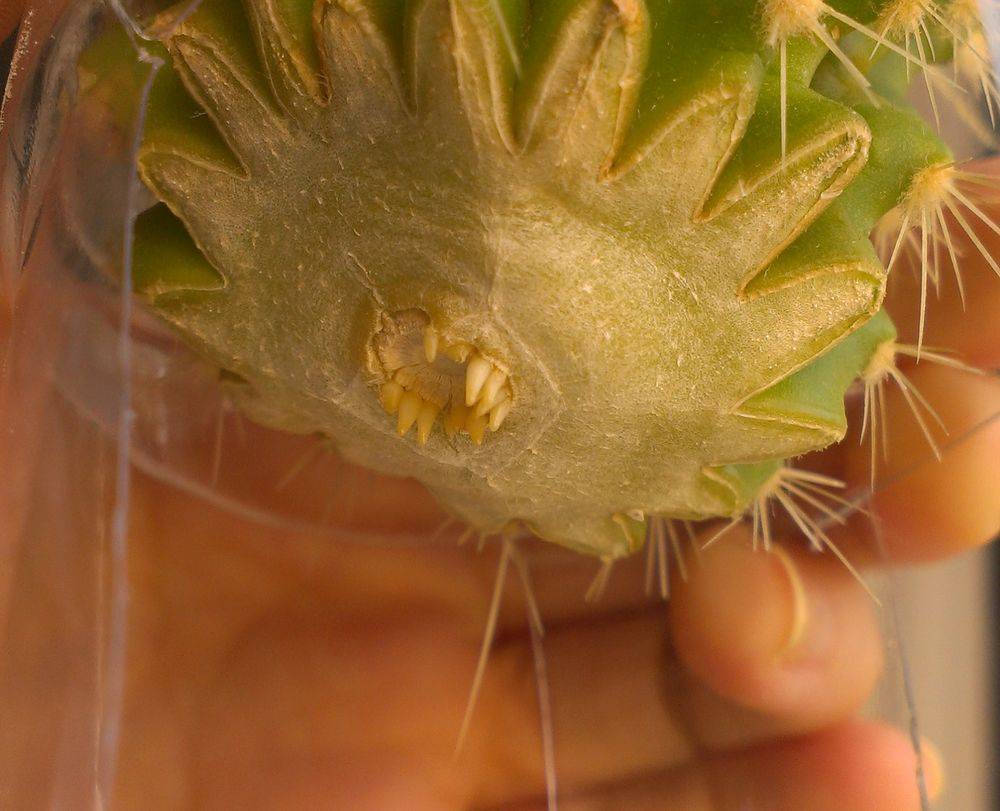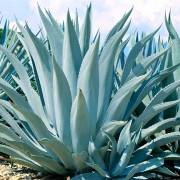Diseases of cacti: common diseases and their treatment methods
Content:
The appearance of cacti gives the impression that no diseases and pests can threaten these plants. However, the thorny flower is susceptible to many ailments. To prevent the situation from becoming fatal, you need to be more attentive to the pet. Better yet, take proactive preventive measures and create optimal living conditions.
Common diseases of cacti
Protozoa are the cause of cactus disease. Most often they are affected by various rot and spotting. They are also susceptible to viral lesions. Frequent guests of succulents are: mosaics, jaundice, witch's brooms.
Dry rot
Some of the most forged enemies of succulents are various rot. It is difficult to immediately understand why the cactus has rotted. Different microorganisms cause different forms. It depends on them which rot will hit the plant - root, stem, dry or wet.
Dry rot on a cactus is most dangerous. Molds are the cause of the disease. It is very fleeting and almost asymptomatic. The cactus can dry without changing color or shape. If you break such a plant, it will be completely dry inside. Changes in the development of a flower can only be noticed by very experienced growers. Since it is very difficult to understand that the cactus has dried up. It is usually too late to save a succulent.
It is believed that the causative agent of the disease gets inside through the wounds on the skin of the plant. At the same time, it can live inside for a long time and will begin destructive development only in weakened areas of the crown.
If the root of a cactus has rotted, what should be done to save it? Quarterly treatment with any fungicide will help to save the plant.
Falling off thorns
Baldness of a cactus occurs when the irrigation regime is violated. The root system suffers greatly from stagnant water. Often, because of this, the plant ceases to receive nutrition in the required amount and the thorns will begin to fall off. Waterlogging is contraindicated especially in winter. Better during the rest period to provide the succulent with coolness and completely "forget" the flower.
In the summer, you should wait for the soil to dry completely in the pot and only then water. Excess water must be drained from the pallet.
What to do if a cactus starts to rot
Only a timely transplant with a revision of the root system will help to save a succulent. In the future, you must strictly adhere to the content rules.
Sometimes the settling of the plant with pests (spider mites, worms) leads to the dropping of thorns. Insects suck the juices from the pulp of the cactus, which leads to a cessation of growth, cessation of flowering, and the loss of thorns. As a result, the stem may simply fall off.
Spotting
Spots on the surface of the ground part of the succulent are associated with a violation of the conditions of detention. Due to constant drafts, extreme drops in temperature, in combination of the latter with high humidity, the integrity of the cactus skin is disturbed.
These areas become the object of interest for all kinds of viruses, pathogenic bacteria. Their vital activity contributes to the growth of stains. Eventually the stem turns completely black and this causes the flower to die.
If any stains are found, it is recommended to provide the flower with comfortable conditions:
- move the pot to a warm, dry place without drafts;
- protect (shade) from direct sunlight;
- pour warm water;
- drain water from the pallet.
Mold
Gray mold is dangerous for young seedlings. Seeds are infected with it, and then the disease is transmitted to young shoots. To prevent the death of crops, seeds should be treated with a fungicide.
If the plant is not properly cared for, various plaques resembling mold may appear on the plant. There is reason to be alarmed. This is a signal and rescue measures are required.
White mold is caused by powdery mildew. The causative agents of the disease are exoparasitic fungi. Plaque is nothing more than their mycelium. Pathogenic crops feed on juices, plants multiply intensively and conquer more and more area. As a result, the entire surface of the stem turns into a continuous felt. With a complete violation of photosynthesis, the development of the succulent also stops. He dies.
Dangerous fungi are always present in the natural flora of the succulent. They are activated only when the plant's immunity is weakened. This is caused by such violations of the conditions for keeping a flower:
- violation of the temperature regime;
- very humid air;
- overflow of a flower;
- oversaturation of soil with nitrogen.
If a lesion is detected, the flower must be isolated immediately. Inspect neighboring plants and take preventive measures. Without correcting the conditions of care, the flower will not survive.
In case of severe damage, the flower must be transplanted into fresh soil. Before that, you need to cut off all the affected areas. Otherwise, it can rot again.
If the scale of the disease is insignificant, you can try folk remedies:
- Soap and soda solution. For three days, the flower is sprayed with a solution of 1 tablespoon of soda and the same amount of grated laundry soap in 1 liter of boiled water. It is enough to process once a day.
- Spraying with a pale pink manganese solution (3-4 crystals of permanganate in 1 liter of water). Processing is carried out three times, with breaks of 3 days.
- Treatment of plants and soil with diluted mustard powder. To do this, 0.5 teaspoon of dry powder is diluted in 1 liter of water.
- Using copper sulphate with laundry soap. The solution is obtained from 5 g of copper sulfate, 10-15 g of liquid laundry soap in 200 ml of water.
If the pathogenic flora occupies large areas, it is better to use fungicides. There are a lot of them. Florists prefer such as topaz and foundation. They are bred according to the instructions. Practice shows that 3-4 treatments are enough.
It is best to prevent illness, that is, to take preventive measures. Fertilizing with minerals will help to increase the flower's resistance to diseases. Phosphorus and potash fertilizers are very welcome. In parallel, it does not hurt to pollinate the bushes with sulfur, spray with diluted milk (proportions 1: 3). It is enough to carry out treatments once a month and only in summer.
Mealybug
If clumpy cotton patches appear on the surface of the flower, then a mealybug has become its guest. Unlike powdery mildew, this parasite destroys all parts of the plant.
The worm can be seen with the naked eye. On the surface of the succulent are large females, very fertile and capable of reproducing without a male.
Like many other pests, they feed on plant sap. At the same time, a poisonous sticky liquid is left on the flower, which is very attractive to sooty fungus. Secondary infection occurs, as a result of which:
- the ground part of the cactus becomes lethargic;
- the stems are deformed, turn yellow, wither;
- the plant stops growing;
- ovaries and buds dry up and fall off;
- the flower's skin is cracked.
What to do when a cactus becomes soft and watery
At the very beginning of the lesion, you can heal the cactus with soapy water (1 tsp per liter of boiling water). This composition should be cleaned from the shoots of the insects themselves, masonry, honeydew nectar. Severely affected parts of the plant are cut off. The flower can be pre-cleaned under a warm shower.
In case of severe lesions, insecticides will help:
- Karbaphos.
- Actellic.
- Tsvetofos.
Some of these drugs are aimed at destroying the pest directly on the stem, while others are absorbed by the roots and transmit the poisonous substance along the stem. Parasites get food poisoning.
Florists often use Fitoverm acaricide. It is the least dangerous for living organisms (people, animals). If a worm is found, all neighboring plants and their locations should be treated with protective agents.
Other
Spider mites are small insects that suck life-giving juices, entangle the plant with cobwebs, and multiply rapidly.
Among the viral diseases of the cactus, you can list:
- A viral mosaic. It appears with yellow and light green specks on the stems, which leads to their drying out.
- Jaundice. The plant turns yellow and dries up.
- Witch's brooms. Succulent shoots turn pale, their growth slows down.
- Saprophytic fungi and lower algae. They do not harm cacti directly, but they change the chemical composition of the soil.
Treatment options
The most difficult question is how to save a cactus if it starts to rot from below. If the succulent is struck by rot, you can use the following techniques to rescue:
- removal of damaged parts and transplanting into clean soil;
- rooting the crown of the stem.
If the rot has already spread to the stem, it is better to graft the plant.
For the treatment of succulents are used:
- Captan. The fungicide is useful against many fungi and bacteria. It is important not to use it with lime.
- Fundazol. Fights fungi well.
- Colloidal sulfur. An effective drug in the treatment of fungal infections, the destruction of ticks.
- Quinosol. Antifungal and antibacterial agent.
- Maxim. It disinfects the soil well. It is used for lesions with fusarium, phomosis, wet rot.
- Topaz. Saves from rust and powdery mildew.
- Copper oxychloride. It is used for late blight, spotting, anthracnose, rust, bacteriosis.
- Fitosporin. An agent against fungal and bacterial infections. Especially good for prophylaxis or in the initial stage of the disease.
With a cactus disease with dry rot, the plant will disappear. Since it will not be possible to revive the cactus, the disease is easier to prevent.
Removing stains on a cactus with a surgical method is not very effective. This can only be done with branched varieties. The scars themselves disfigure the plant, but the spread of the disease does not stop. It is possible to contain or completely stop the disease by treatment with fungicides.
Cutting off the roots
When the roots are rotting, only cutting off the damaged areas will help. Since it is impossible to save a cactus otherwise. After that, the plant is kept in a weak solution of manganese (about 30 minutes), the sections are sprinkled with coal powder, dried and planted in disinfected soil.
In the next 3 weeks, watering the flower is not recommended.
Cactus transplant
What to do if the cactus rots from the bottom? If a flower is found to be damaged, it is worth trying to transplant it. The pot and soil must be new, decontaminated.
For transplanting a plant:
- pulled out from an old pot;
- freed from the ground;
- roots, stems are cleaned of spoiled areas;
- the whole plant is washed with hot (about 50 degrees) water, with the addition of a fungicide;
- the cuts are sprinkled with crushed coal, cinnamon powder;
- it is dried in an upright position in the air for up to 5 days;
- is planted in new soil.
After transplanting, the cactus is not watered for about 5 days, it is carefully shaded.
Other
You can cure a succulent by pruning all affected areas. The main thing is to remove rot on a cactus until healthy tissue, treat it with disinfectants (coal, sulfur, cinnamon powder). If the tip is damaged, it can be cut off, and the rest of the cactus can be used as a stock. In the future, fungicides are used, depending on the disease.
You can also try to preserve the succulent by re-rooting. That is, the roots are completely cut off. For planting, only the healthy ground part is taken. It should be sharpened like a pencil, left to dry upright and dropped into a glass of water.
After 10-14 days, roots will appear on it and the seedling can be planted in an individual pot. Then the plant is watered, after a while the water is drained from the pan. The next watering is needed only after 20-22 days.
Further care of the cactus
After the cactus has straightened, it is required to change the conditions of its maintenance. To prevent the disease from returning, you should provide him with the optimal temperature, humidity, watering regime.
Temperature and humidity
Cacti are desert dwellers. They are very sensitive to the amount of sunlight and heat. But in the midday sun, they can easily get sunburn. With home content, this fact must be taken into account.
Humidity for succulents is sufficient within 40-50%. The temperature during the dormant period is not more than 15-18 ° C (they can tolerate short-term drops to +5 ° C), during the active growing season, the optimum temperature will be 26-28 ° C.
Soil and watering
The soil for a succulent needs light, loose, slightly acidic. Desirable in the composition of sand, peat and charcoal. A high drainage layer is very important. Even a healthy plant can rot without it. To do this, use: expanded clay, pebbles, broken brick.
In winter, watering is very poor. It is enough to moisten the soil every 2-3 weeks. In the warm season, succulents need frequent and abundant watering. Depending on the drying of the soil surface, 2-4 times a week. Watering is carried out through the pallet. After 20-30 minutes, excess water is drained.
Diseases of cacti and their treatment have been widely studied in the world. Although most varieties have very good immunity, if the rules are violated, they can get sick. To make your pet happy all year round, you should take care of it. To do this, you need to regularly inspect the bush, carry out preventive procedures and treat if necessary.
